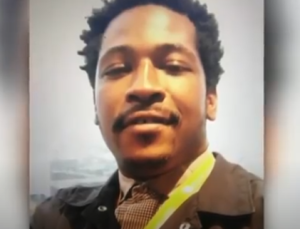In Atlanta, a white police officer has been dismissed following the fatal shooting of a Black man, Rayshard Brooks. The incident took place near a fast-food restaurant and sparked a night of unrest in the city. Another officer involved in the event has been placed on leave, and the city’s Chief of Police resigned in the aftermath. The incident has once again brought to the forefront the issue of police brutality and systemic racism in the United States, leading to widespread protests and calls for justice.

The Shooting of Rayshard Brooks
On the night of the incident, Rayshard Brooks had been asleep in his car outside a fast-food restaurant. The police were called to the scene after receiving a report that Brooks was blocking the drive-thru lane. Upon their arrival, Brooks was subjected to a breath test, which he failed, leading the officers to attempt to arrest him. According to footage released from police body cameras, a struggle ensued during the arrest attempt. Brooks managed to grab one of the officers’ tasers and fled the scene, leading to a brief chase.
During the chase, Brooks turned and pointed the taser at one of the officers, who then responded by firing live ammunition. Brooks, who was 27 years old, died at the scene as a result of his injuries. The use of deadly force in this situation has sparked significant outrage, particularly given that Brooks did not possess a lethal weapon, and was running away from the officers rather than posing an immediate threat.
Public Response and Protests
The killing of Rayshard Brooks led to widespread condemnation, with many questioning whether the use of deadly force was justified. While the officers involved in the incident argued that Brooks’ act of pointing the taser at them constituted a threat, critics have noted that tasers are generally considered non-lethal weapons. Furthermore, Brooks’ attempt to flee rather than attack raised further questions about the necessity of the officer’s actions. Many public figures, including legal experts and civil rights activists, have spoken out, arguing that the officer’s decision to use deadly force was not warranted.
Protesters soon gathered at the fast-food restaurant where the incident occurred, expressing their anger over yet another case of a Black man being killed by the police. The situation quickly escalated, with the restaurant where Brooks had been shot being set on fire by protesters. The officer responsible for firing the shots was swiftly sacked, and the second officer involved was placed on leave. The mounting tension in the city also led to the resignation of the city’s police chief, who stepped down in response to the public outcry.
Legal Perspectives on the Case
In the aftermath of the shooting, lawyers representing the Brooks family expressed the deep sense of frustration and exhaustion felt by many in the Black community. They highlighted how this case mirrors numerous other instances of police killings, where justice seems elusive. One lawyer for the Brooks family reflected on the difficulty of defining what justice looks like in these situations, given the sheer number of similar cases over the years. “I think they say we want justice, but I don’t know… I don’t even care… I don’t know what justice is anymore,” one of the family’s legal representatives stated, pointing to the systemic issues that have allowed such incidents to occur repeatedly.
The Broader Context of Police Brutality and Racism
Rayshard Brooks’ death occurred against the backdrop of widespread protests in the United States following the killing of George Floyd by police in Minneapolis. Floyd’s death, which occurred just weeks before Brooks was killed, had already ignited a national conversation on race, police brutality, and systemic injustice. Across the country, protesters have been calling for police reform, accountability, and an end to the disproportionate use of force against Black people.
In Atlanta and elsewhere, protests intensified in the wake of Brooks’ killing, with demonstrators demanding more than just the dismissal of the officer involved. Many protesters are calling for systemic changes to the policing system, arguing that simply firing officers or having them face criminal charges is not enough to prevent such incidents from happening again. The wave of protests following Floyd’s death had already seen tens of thousands of people taking to the streets to march against racism, not only in the United States but around the world.
A Seismic Shift in Attitudes
One notable aspect of these recent protests is the diversity of the participants. While protests against police brutality have historically been led predominantly by Black Americans, the demonstrations following George Floyd’s death have included people of all races and backgrounds. This has been seen as a significant shift in public opinion, with many White Americans acknowledging the systemic nature of racism and police brutality for the first time. A Black veteran civil rights activist, who marched with Dr. Martin Luther King Jr., commented on this change, noting that in the past, most marches were predominantly Black. Now, the protests include a diverse range of participants, from White Americans to Hispanic communities, all recognizing the need for change.
The recognition of the widespread nature of police brutality and racism has led to calls for deeper systemic reforms. Charlie Sykes, a former right-wing talk show host and staunch Republican conservative, acknowledged the growing realization among White Americans that police brutality is not an isolated issue but a systemic one. For many, the deaths of George Floyd, Rayshard Brooks, and countless others have held up a mirror to the country, forcing Americans to confront the uncomfortable realities of racial inequality and injustice.
Conclusion
The death of Rayshard Brooks has reignited the conversation about police use of force and systemic racism in the United States. While the officer responsible for his death has been fired, the public demands for justice extend far beyond individual accountability. As protests continue across the country, many are hoping that this moment will lead to lasting changes in how policing is conducted, particularly in communities of color. The fight for justice, equality, and meaningful reform continues, as the nation grapples with the consequences of yet another tragic loss.


